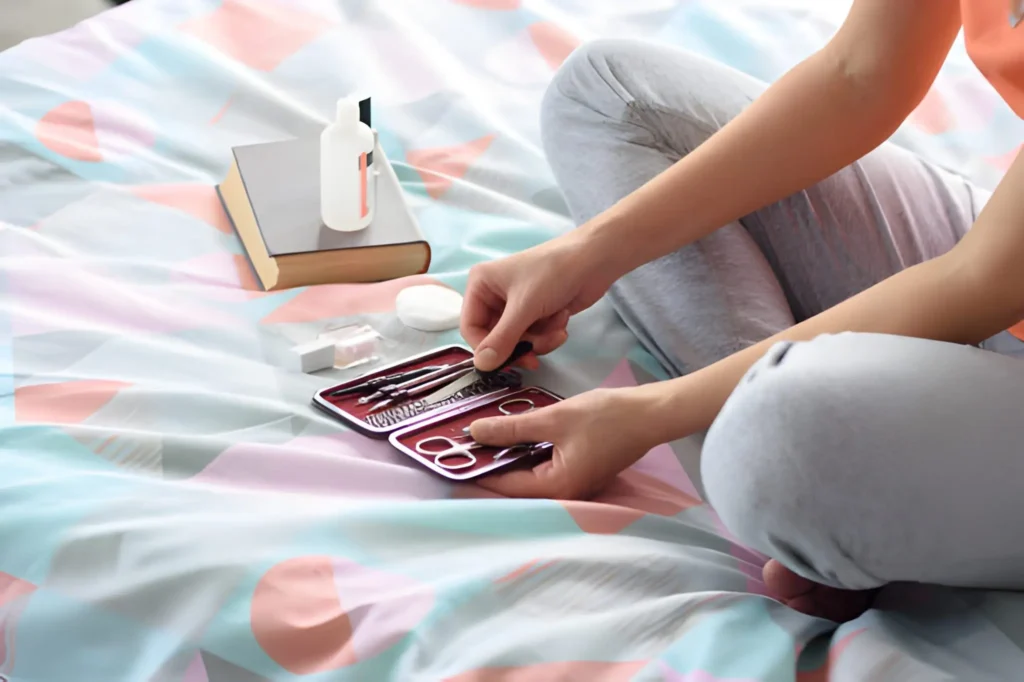Getting salon-quality nails without leaving your house isn’t just convenient anymore—it’s actually doable. A complete at home nail kit changes how people approach nail care, making professional results accessible whether you’re prepping for a big event or just maintaining your weekly routine. These kits typically include everything from base coats to top coats, cuticle tools, files, and sometimes even LED lamps for gel applications. The beauty industry has seen a massive shift since 2020, with at-home nail care products growing by nearly 27% as people realized they could achieve similar results to what they’d pay $40-60 for at salons.
What Actually Goes Into a Proper Kit
Here’s where things get interesting. Not all kits are created equal, and honestly, the difference between a basic set and a comprehensive one is pretty huge. Quality kits include multiple grit files—usually 100/180 grit for shaping and 240+ for smoothing. You’ll want a proper cuticle pusher, preferably stainless steel because wooden ones harbor bacteria way too easily.
The polish selection matters more than most people think. A good kit includes a strengthening base coat (look for ones with calcium or keratin), at least 3-5 color options, and a quick-dry top coat. Some research from cosmetic chemistry journals shows that layering matters—base coats with smaller molecular structures actually penetrate the nail plate better, creating stronger adhesion for color coats.
Buffer blocks are underrated. The four-sided ones work wonders because each side serves a different purpose: shaping, smoothing, buffing, and shining. Using them in the right order can make your nails look professionally done even without polish.
The Science Behind Lasting Results
Polish longevity isn’t magic—it’s chemistry. Nail plates are porous, made of keratin layers that absorb moisture and oils. This is why preparation matters so much. Wiping nails with rubbing alcohol before applying base coat removes natural oils that prevent proper adhesion.
Temperature plays a role too. Applying polish in rooms warmer than 75°F can cause it to dry too quickly, leading to bubbling. Cooler environments around 65-70°F give better results because the solvents in polish (usually ethyl acetate or butyl acetate) evaporate at a more controlled rate.
Thin coats always beat thick ones. Two thin color coats dry more evenly and last longer than one thick coat. Each layer should be barely visible on its own—that’s the trick professionals use.
Making Your Kit Work Harder
Storage matters way more than people realize. Keep polishes upright in a cool, dark place. Heat and light break down the resins that give polish its shine and durability. Some dermatological studies suggest that polishes stored properly can maintain quality for 18-24 months, while those left in bathrooms (with temperature fluctuations) degrade in 6-8 months.
Investing in a quality cuticle oil changes everything. Jojoba oil-based formulas work best because their molecular structure closely mimics natural sebum. Applying it daily keeps the nail bed flexible and prevents chipping along the edges.
Clean your tools after every use. Rubbing alcohol on metal tools and soap water for brushes prevents bacterial buildup. This isn’t just about hygiene—residue from old polish affects how new applications adhere.
Why Home Kits Make Sense Now
The cost breakdown is pretty straightforward. A decent complete kit runs $30-80, while a single salon visit averages $35-50. After three uses, you’re already ahead financially. Plus, you’re not locked into appointment schedules or limited by salon hours.
The control factor matters too. You choose exactly how your nails look, how long you spend on them, and what products touch your skin. Some people have sensitivities to certain polish ingredients—having your own kit means you can select hypoallergenic or “3-free” (no formaldehyde, toluene, or DBP) options.
Also Read-Staying Ahead in Dental Practice: Continuous Education, Tech Trends, and Patient Care







